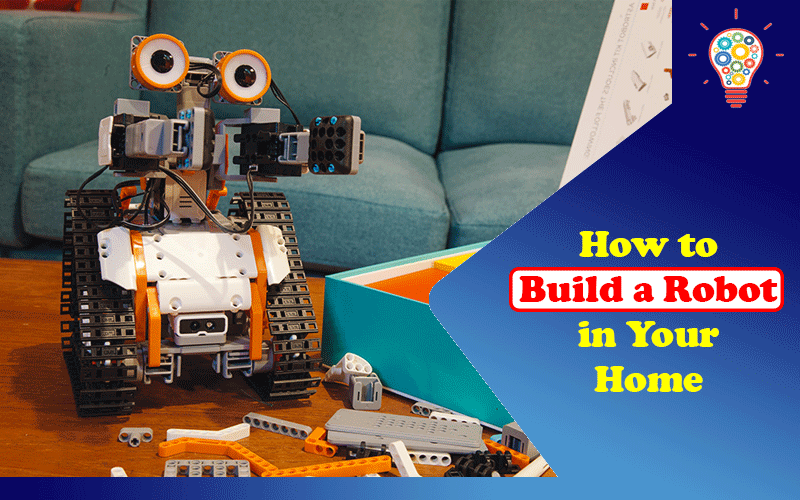Robotics result in the future. In 2020, the North American robotics market had a revenue of 716 million dollars. Companies ordered more than 13,500 units of robots, helping in a range of industries.
Robots seem complicated. But every person who designs robot AI started out as an amateur. They told themselves that they wanted to build a robot, and they set about doing so.
What are the first steps you can take to build a robot? What skills and tools do you need? What should you prioritize in your construction?
Answer these questions and you can build innovative and affordable devices. Here is your quick guide.
Table of Contents
Decide What Robot You Want to Make
Before you get to work building a robot, you need to think about what you want to do. Many websites provide guides on how to build a robot for beginners. Read them and see what your options are.
Designing groundbreaking AI that turns everyday machines into robots is ideal. But the odds are that you will not be able to create such technology.
Yet you can build a small and functional device. It can help you clean your home, assist with your mobility, or keep you company.
Building a robot requires a few important skills. You need to have some manufacturing intelligence, being able to work with tools. You need to know electronics so you can program your robot.
You also need to have some math and computer software skills. These allow you to make accurate designs and simulate the functions of your robot.
If you don’t have one set of skills, you can adjust your design accordingly. People who don’t know about manufacturing can build a simple structure with complicated electronics. Be willing to make those adjustments, or spend some time acquiring skills you don’t have.
Get Your Tools
Basic robots require many components. You can find most of them through online retailers.
At a minimum, you need a microcontroller. It is a small computer that stores memory and programming.
You need to build a chassis. You can buy a chassis kit or a premade chassis, but this costs a lot of money. You can make your own through 3D printing, laser cutting, or engineering.
Make sure the chassis has plenty of room for batteries. You can build a robot with standard AA batteries. Provide space for the batteries, a power jack, and jumper wires.
You need wheels with rotation servos. Make sure the wheels have a good grip and full mobility.
To build the robot, you need a hot glue gun and tweezers. Depending on your design, you may need soldering materials. But a lot of robot designs for beginners do not require them.
Make a Design
There are many software applications you can use to design your robot. Get a good three-dimensional view of what your prototype will be. Consider where the main components will go, including your microcontroller.
If you haven’t decided on the purpose of your robot, you need to do so now. A vacuuming robot needs to have a flat and sleek design. A robot that helps with mobility should have good maneuverability.
Consider the requirements that your robot needs to have. Then match every component of your design to meet those requirements. If there is anything that is unnecessary, remove it from your robot.
Be willing to make a few different designs. Run simulations on them and get input from others experienced with robotics.
You don’t need software to make a good design. Sketch out your thoughts on paper. Make sure you include visuals of all sides and where individual components will go.
Focus On Control
As you build your robot, a lot of concerns will cross your mind. You may wonder about what it will look or sound like.
Your key focus should be on control. You can hook an external controller to your device, giving yourself maximum flexibility. If you want to be a little more ambitious, you can program the robot with artificial intelligence.
Either way, your building process should give the robot everything it needs to operate. Keep your chassis lightweight to give it a full range of motion. Provide plenty of battery power so it can operate for a long period of time.
Be diligent with your programming. Focus on carrying out specific tasks like moving forward and backward. You can get more elaborate once you learn the basics.
Run Tests
Your robot is never done until you run tests on it. Test out individual components before you put them in the chassis. Inspect the servos to make sure the wheels are turning at high speed.
Be careful with your controller. Make sure you can control or program your robot from a distance.
See how long the batteries last by leaving your robot on overnight. Once they drain, test replacing or recharging them.
Your robot may be fully functioning, but it may not be useful. Give your robot to others and see how they make use of it. If they are using it in ways you didn’t intend, consider redesigning it.
How to Build a Robot
Build a robot, and you can build some important skills. Decide what you want to make. Recognize that you need engineering, electronics, and mathematics skills.
Get the tools you are going to need, then set about designing it. You don’t need complicated software to do so. Sketch some good visuals and plan where everything will go.
Then run a lot of tests. Test the main components, then the robot as a whole. Give it to others and see how they use it.
Keep reading about robotics and technology. Follow our coverage for informative guides.

